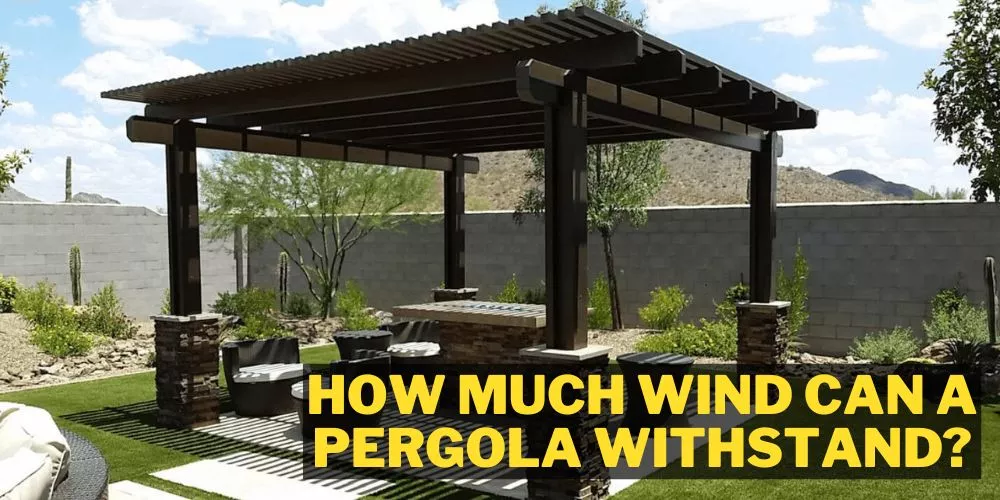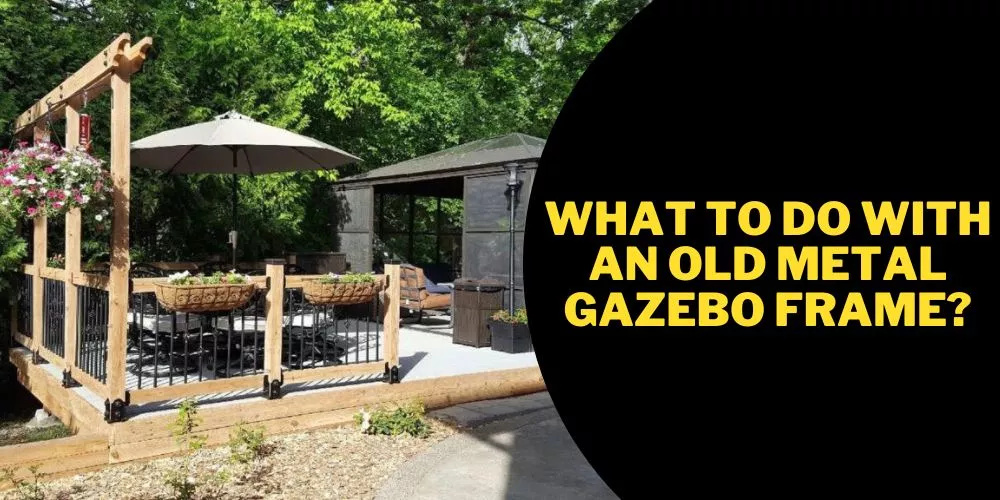
Adhering to HOA guidelines isn’t just about keeping the peace; it’s crucial for maintaining property values and the integrity of community living. But why, you might wonder, does a gazebo—a simple, elegant structure—need a thumbs-up from the HOA?
This article aims to answer that question, address homeowners’ challenges, and offer clear guidance to navigate this often tricky terrain. You’ll be well-equipped to make your gazebo dream a compliant reality by the end.
Do You Need HOA Approval for Gazebo?
In many HOA communities, adding structures like gazebos will require approval. Given their prominence and potential impact on sightlines, aesthetics, and even neighbor privacy, ensuring they align with the community’s guidelines is often deemed essential. While there are exceptions, especially in more lenient or less structured HOAs, it’s a safe rule of thumb to assume that a gazebo might catch the HOA’s attention, no matter how tasteful or subtle.
Highlighting factors that influence the need for approval

Several factors can influence whether your gazebo project sails smoothly through the approval process or faces some scrutiny:
- Size: A large, towering gazebo might significantly impact the neighborhood’s aesthetic more than a compact one.
- Location: Setting up near property boundaries or a neighbor’s window could raise concerns about privacy or obstruction.
- Design & Materials: A gazebo design that starkly contrasts with the community’s architectural theme or uses non-traditional materials might be a point of contention.
- Utilities & Additions: Planning on adding power or water features? These might further necessitate HOA review.
Providing examples of scenarios where approval is necessary
Consider Jane, who wanted a two-story pavilion next to her neighbor’s fence, complete with ornate, non-traditional designs. Given its size and prominent location, her HOA needed to review and approve the project.
On the other hand, John’s small, corner-placed gazebo with traditional woodwork still required HOA approval but faced fewer questions given its hidden nature. Both scenarios underscore the essence of consulting with the HOA, ensuring all parties agree.
What is a Homeowners’ Associations (HOAs)?
Homeowners’ Associations, commonly abbreviated as HOAs, might sometimes feel like the proverbial Big Brother, monitoring your every home improvement move. But what exactly are they, and why do they hold such influence?
Definition and purpose of HOAs
At its core, an HOA is a private association, often established by real estate developers, to market, manage, and sell homes in a residential subdivision. Upon purchasing a property within such a community, homeowners automatically become members of the respective HOA. Their primary purpose?
Ensure that the community upholds certain standards that often relate to property appearance, safety, and overall neighborhood harmony. It’s less about micromanaging homeowners and more about fostering a cohesive community environment.
HOA rules and regulations
Every HOA comes with its set of governing documents. These typically include the Declaration of Covenants, Conditions, and Restrictions (CC&Rs), bylaws, and rules and regulations. CC&Rs might dictate things like property colors or landscaping norms, while bylaws often deal with the governance of the HOA, such as how often meetings occur. The rules and regulations, on the other hand, tend to cover day-to-day operations and procedures of the association.
Role of HOAs in maintaining community aesthetics and property values
One primary objective of an HOA is to maintain, if not increase, property values within the community. By enforcing aesthetic standards and ensuring that all homes adhere to a set guideline, HOAs play a pivotal role in keeping the neighborhood looking its best.
A well-maintained community often translates to higher demand, and consequently, higher property values. Beyond aesthetics, they also focus on communal harmony, ensuring that residents coexist without nuisances and disputes, further solidifying the community’s desirability.
HOA Approval Process: Why It Matters?
Navigating the home improvement realm can be thrilling, but it’s not without its share of hurdles, especially when an HOA is involved. Understanding the HOA approval process and its significance is paramount before diving headfirst into that backyard oasis or gazebo dream.

Importance of obtaining HOA approval before making changes to your property
The allure of personalizing one’s home is undeniable. However, within an HOA community, there’s a collective interest at play. Homeowners respect the community’s shared vision by seeking HOA approval before making significant changes.
This process ensures that individual changes harmonize with the collective aesthetic, ensuring the community retains its appeal and cohesiveness. Moreover, obtaining prior approval can save homeowners from hefty costs of modifications should their changes not meet the association’s guidelines.
Consequences of not seeking approval
Diving into a project without HOA consent might seem tempting, especially if you’re convinced your changes are minor. However, the repercussions can be unexpectedly harsh. Homeowners could face mandatory reversions of the unapproved changes, which is financially draining and time-consuming.
Additionally, there could be monetary fines, legal actions, or liens against the property. In extreme cases, the HOA might even have the right to foreclose on homeowners who continuously violate the covenants.
Avoiding potential fines and conflicts through approval
At its heart, the approval process is designed to prevent misunderstandings and conflicts. By proactively seeking approval, homeowners not only sidestep potential fines but also foster a positive relationship with the HOA and neighbors.
It’s an avenue to ensure that your vision aligns with community standards, preventing disputes and promoting neighborhood harmony. In essence, seeking approval isn’t just about following rules; it’s about participating in and respecting the community’s shared vision.
Why Do You Need a HOA Approval?
The winds of change can be invigorating. After all, that burst of inspiration to upgrade or alter your living space is a testament to your creativity. However, this enthusiasm sometimes needs a touch of temperance within an HOA. Let’s dig deeper into why the HOA seal of approval is more than just a bureaucratic step.

Reviewing HOA guidelines related to external structures
At the heart of many HOA guidelines lies a shared vision—a communal aesthetic, safety standards, and a neighborhood persona. External structures, whether a gazebo, pergola, or tool shed, can significantly alter this shared canvas.
HOAs often provide clear-cut guidelines about the size, design, materials, and placement of such additions. This isn’t to curb creativity but to ensure that individual inspirations align with the collective neighborhood aesthetic.
Understanding the scope of changes that require approval
While adding a mailbox or a new garden gnome might slide under the radar, more significant changes usually beckon the spotlight. Changing your home’s paint color, adding a deck, installing solar panels, or erecting that dream gazebo will likely require HOA oversight.
It’s crucial to recognize that these guidelines aren’t just about aesthetics; they can also relate to safety regulations, privacy concerns, or potential impacts on local wildlife.
Differentiating between minor modifications and significant additions
So, where does one draw the line? Minor modifications, like changing your front door’s design or adding a new plant to your garden, might not necessitate a rigorous review.
However, more significant undertakings, like converting a lawn into a full-blown vegetable garden or adding an extension to your home, dive into the deep end of the approval pool. It’s about gauging your changes’ potential ripple effects on the community pond.
How to Obtain HOA Approval for a Gazebo?
Embarking on the journey to set up a gazebo in your backyard? It’s not just about selecting the perfect design or finding the right spot; it’s also about weaving through the tapestry of HOA guidelines.

Before we dive into the nitty-gritty, let’s lay the foundation for this approval process. It’s not as daunting as it sounds, promise! With the right steps and patience, you’ll quickly sip your morning tea under your gazebo. Let’s set the stage!
Review HOA Guidelines
Before you even think of hammering down that first nail, getting intimately familiar with your HOA’s rulebook is crucial.
Understanding specific guidelines related to structures like gazebos
Every HOA has a set of guidelines, often called CC&Rs (Covenants, Conditions, and Restrictions). These guidelines will likely have a section dedicated to external structures. Poring over these specifics is crucial, as they can make or break your gazebo dream. Whether there’s a height restriction, specific design elements to avoid, or even preferred materials, the CC&Rs will be your guiding star.
Identifying any restrictions on size, materials, placement, and design
Does the HOA have a preference for natural wood over synthetic materials? Is there a stipulation about gazebos being far from property boundaries? Perhaps there’s a restriction on the pavilion’s height or roof design. Ensure you’ve got a checklist of these nuances. They’ll come in handy when shopping for or designing your gazebo, saving you time, money, and potential heartache.
Submit Application
With a clearer picture of what’s allowed and what’s not, it’s time to make it official.
How to prepare a formal application for gazebo installation?
Most HOAs will have a formal application process for structural additions. This usually involves filling out a form detailing your proposed project. While it might seem like red tape, it’s a structured way for the HOA to review and ensure everything aligns with community standards.
Including necessary documents (blueprints, dimensions, photos, etc.):
Think of this as the portfolio of your gazebo project. Attach detailed blueprints, if you have them, and specifications like dimensions. If you’ve got inspiration photos or a visual mockup of what the gazebo would look like in your backyard, include those too. The more detailed and visual you can be, the easier it is for the HOA committee to envision and, hopefully, give you the green light.
Wait for Approval
Ah, the waiting game. As the adage goes, “Patience is a virtue.” But how long should you keep that kettle on hold for the celebratory tea under your new gazebo?
Average turnaround time for HOA approval decisions:
Typically, most HOAs aim to revert on decisions within 30 to 60 days. However, this timeline can vary based on the specific association, the volume of requests they have, or even the complexity of your gazebo project. It’s always a good idea to check in with your HOA about their average turnaround time, so you can manage your expectations (and that of any contractors you might be working with).
Being patient during the review process:
While the anticipation might have you on tenterhooks, understand that the HOA is likely juggling multiple requests alongside yours. They’ll evaluate each proposal’s impact on the community and ensure everything is up to par. So, brew a cuppa, relax, and trust that the process is churning.
Address Feedback
Feedback isn’t just about approval or rejection—it’s an opportunity for dialogue.
Possibility of receiving suggestions or modifications from the HOA:
It’s not uncommon for HOAs to come back with suggestions rather than a straightforward yes or no. They might propose modifications to the design, suggest alternative materials, or recommend relocating your planned gazebo to another spot in your yard.
Willingness to make adjustments while adhering to guidelines:
Feedback is a two-way street. While the HOA might have their suggestions, you have your vision. The trick lies in blending the two. Be open to adjustments—often, these recommendations are rooted in years of community experience and can enhance your project. But don’t be shy about advocating for elements of your gazebo close to your heart. Collaboration is key.
Benefits of Working Within HOA Guidelines
While diving deep into HOA rulebooks and adjusting gazebo plans might feel like a hoop-jumping exercise, it’s crucial to see the broader picture. There are tangible benefits in aligning with these guidelines, not just for you, but for the entire community. Let’s delve into the silver linings.

Maintaining community aesthetics and property values
- Community Aesthetics: Every homeowner’s association envisions a certain aesthetic appeal for the community—a tapestry woven together by individual homes, landscapes, and structures. Adhering to guidelines contributes to this bigger image, ensuring the neighborhood remains picturesque and aligned with its unique character.
- Property Values: A consistent and well-maintained appearance often translates to higher property values. Imagine prospective buyers visiting the community. Uniformity, proper planning, and aesthetics can significantly boost their perception, making properties more attractive and driving up demand and, by extension, property prices.
Avoiding conflicts with neighbors and the HOA
No one enjoys neighborhood disputes or being on the wrong side of community decisions. By working within HOA guidelines:
- You foster a harmonious relationship with neighbors who appreciate your respect for community rules.
- You sidestep potential confrontations with the HOA, ensuring that you remain in good standing and can participate positively in community affairs.
Contributing to a cohesive neighborhood appearance
- Unified Vision: Think of the community as a canvas, and every house, tree, and gazebo as a brushstroke. Each addition, when done within the framework of HOA guidelines, contributes to a cohesive artwork that every resident can be proud of.
- Community Pride: When individual homes align with the collective vision, it fosters a sense of community pride. Residents feel more connected, appreciating the shared effort that goes into creating and maintaining such a harmonious living space.
Pro Tips for a Smooth Approval Process
Embarking on a gazebo installation journey in an HOA community can seem daunting. However, with the right approach and a sprinkle of savvy, you can navigate the approval maze with finesse.

Before we delve into the nitty-gritty, let’s understand why these tips matter and how they can be your guiding light in ensuring your dream gazebo becomes a reality without any hitches. Ready to become the HOA approval maestro? Let’s jump in!
Early Research
Before you even think about setting up that beautiful gazebo, there’s a vital step you shouldn’t skip: diligent research.
- Researching HOA Guidelines: Dive into your HOA’s guidelines, bylaws, and any associated documents. You’re looking for specific rules about outdoor structures, especially gazebos. This isn’t just about getting approval; it’s about making informed decisions. Familiarizing yourself with the stipulations can save you from potential setbacks and wasted investments.
- Ensuring Gazebo Alignment: Once you’re armed with knowledge, it’s time to shop—but with a discerning eye. As you explore gazebo options, keep those regulations at the forefront. Consider aspects like material restrictions, maximum size allowances, and aesthetic guidelines. The ideal pavilion should blend your taste and HOA compatibility.
Clear Communication
Ah, the art of communication—it’s your bridge to a smooth approval process.
- Engaging with the HOA Board: Regular touchpoints with the HOA board or the relevant committee can be invaluable. Don’t just drop your application and hope for the best. Engage in discussions, present your ideas, and be open to feedback. This proactive approach can help in preemptively addressing any concerns.
- Seeking Clarification: Find something in the guidelines that’s as clear as mud? Don’t assume or interpret. Reach out and ask. Whether it’s about a specific material or the distance from a property line, getting explicit clarification can save you from missteps and misunderstandings down the line. Remember, it’s always better to ask now than to regret later.
Attention to Detail
When getting HOA approval, the devil is truly in the details.
- Accurate Dimensions and Specifications: While it might seem tedious, ensuring every inch, or centimeter, is accounted for can make all the difference. This isn’t the time for approximations. Providing precise measurements, detailed specifications, and clear visuals helps paint a complete picture for the HOA. It shows them you’re not cutting corners and respect the guidelines.
- Demonstrating a Comprehensive Plan: Beyond just the size and look of your gazebo, showcase that you’ve thought of everything. How will it be anchored? What materials will be used? How does it complement the overall aesthetics of the community? A well-laid-out plan can expedite the approval process and alleviate the board’s concerns.
Consider Neighbors’ Views
While the HOA’s approval is crucial, there’s another group whose opinions can carry weight: your neighbors.
- Discussing Gazebo Plans: Before you submit that application, have a chat with your immediate neighbors. Share your plans, show them visuals, and get a feel for their views. They might bring up points you hadn’t considered, or even better, give their wholehearted support.
- Building Community Consensus: If there’s any pushback, it’s not the end of the road. Engage in constructive conversations, address concerns, and be willing to make minor tweaks. Building a consensus doesn’t mean pleasing everyone, but it does mean cultivating understanding and goodwill. After all, a gazebo can be a beautiful addition, not just for you, but for the entire community to enjoy.
Do You Need a Permit For A Gazebo?
Frequently Asked Questions (FAQs)
Do all HOAs require approval for gazebos?
No, but many HOAs do. Check your specific association’s guidelines to be sure.
What documents are typically required during the application process?
Blueprints, design plans, dimensions, material details, and often photos of the proposed location.
Can I apply for retroactive approval if I installed a gazebo without permission?
Yes, but you risk fines and possible removal if not approved.
Are there any alternatives to gazebos that might not require approval?
Some HOAs may allow pergolas, canopies, or other shade structures without approval, but always check first.
Can I appeal an HOA decision to deny my gazebo request?
Typically, yes. Most HOAs have an appeals process, but success varies. Always address their concerns in your appeal.
Conclusion:
If you are wondering Do you need HOA approval for gazebo? I would say navigating HOA guidelines can seem daunting, especially when dreaming of adding a beautiful gazebo to your space. But it’s entirely achievable with research, patience, and open communication.
Remember, HOAs aim to maintain a harmonious community. By understanding and respecting the process, you’ll enjoy your gazebo in no time. We hope that this guide has been helpful. You can read about similar topics here on our website. Check back again soon for more.


